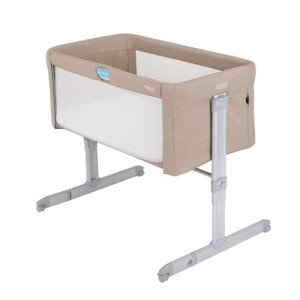The Ultimate Guide to Choosing a Baby Cot Bed: Safety, Features, and More
When it comes to inviting a new baby, among the most crucial purchases parents will make is a baby cot bed. Cots For Sale is not just where a baby will sleep; it's likewise a space of convenience, safety, and security. Given Cheap Cots of choices available on the marketplace today, making an informed choice can be overwhelming. This guide aims to simplify the procedure by covering vital features, safety standards, types of cot beds, and a lot more.
Tabulation
- Introduction
- What is a Baby Cot Bed?
- Safety Standards
- Types of Baby Cot Beds
- 4.1 Traditional Cots
- 4.2 Convertible Cot Beds
- 4.3 Portable Cots
- Key Features to Consider
- Selecting the Right Mattress
- Setting Up the Cot Bed
- FAQs
- Conclusion
1. Intro
A baby cot bed works as a devoted sleeping location for infants and is created to provide convenience and safety. As brand-new parents browse the numerous choices offered, it is vital to comprehend the various types of cot beds, security standards, and essential functions to make the best selection.
2. What is a Baby Cot Bed?
A baby cot bed is a customized furniture piece where babies sleep. Unlike regular beds, cot beds are particularly created for infants and provide a safe environment for them to rest. Cheap Cots feature high sides to prevent babies from falling out and typically featured adjustable mattress heights to accommodate a growing child.
3. Security Standards
When selecting a baby cot bed, safety should be the foremost factor to consider. Here are some critical safety requirements to keep in mind:
- Certification: Ensure the cot bed meets nationwide and international security requirements, such as the ASTM International and Consumer Product Safety Commission (CPSC) policies.
- Slat Spacing: The range in between slats need to not exceed 2 3/8 inches to prevent the baby's head from slipping through.
- Stability: Ensure that the cot bed does not wobble or shake.
- Non-Toxic Materials: Check for non-toxic finishes and products to make sure the baby's safety.
4. Types of Baby Cot Beds
The market offers different kinds of cot beds, each dealing with different needs. Below is an outline of the most common types:
4.1 Traditional Cots
Traditional cots are standalone furnishings items designed specifically for infants. They usually feature fixed sides and multiple adjustable mattress heights.
4.2 Convertible Cot Beds
Convertible cot beds can be changed into young child beds, permitting extended usage. This type is an affordable choice as it grows with your child.
4.3 Portable Cots
Portable cots, also referred to as travel cots or playards, are light-weight and designed for families on the go. They can be easily assembled and dismantled for travel.
5. Key Features to Consider
When picking a cot bed, moms and dads should consider the following functions:
- Adjustable Mattress Height: This function enables lowering the mattress as the baby grows, making it simpler for moms and dads to lift the kid.
- Product Quality: Look for a cot bed made from resilient, non-toxic wood.
- Security Features: Some cot beds come with rounded edges and additional security locking mechanisms.
- Reduce of Assembly: Check if the cot bed needs very little tools for assembly and how simple it is to take apart.
- Storage Options: Some cot beds feature built-in drawers for keeping baby fundamentals.
6. Picking the Right Mattress
The ideal mattress is vital for your baby's sleep quality. Here are some tips for picking a suitable bed mattress:
- Firmness: A mattress should be firm adequate to prevent the baby from sinking in too deep, decreasing the danger of suffocation.
- Breathability: Opt for breathable materials to make sure correct air blood circulation.
- Water-Resistance: Consider water resistant covers for simple cleaning and health.
7. Establishing the Cot Bed
Installing the cot bed properly is important for security. Here are actions moms and dads must follow:
- Choose the Right Location: Place the cot bed far from windows, cables, and other prospective threats.
- Check the Height: Adjust the bed mattress height based on the kid's age and movement.
- Remove Extras: Avoid putting pillows, blankets, or stuffed toys inside the cot bed when the baby is sleeping.
- Check Regularly: Regularly inspect all components and screws for wear and tear.
8. Frequently asked questions
Q1: At what age should a baby shift from a cot to a bed?
A lot of children shift to a young child bed between 18 months to 3 years, depending on their advancement and individual needs.
Q2: How can I guarantee my baby sleeps securely in their cot bed?
Ensure the cot is without soft bed linen, toys, and anything that could obstruct the baby's breathing. Follow all security standards carefully.
Q3: Is it essential to have a separate nursery for the cot bed?
While numerous moms and dads pick to have a separate nursery, it is not a necessity. As long as the cot bed is in a safe and peaceful environment, it can be put in the parents' bed room.
Q4: When is it safe to lower the bed mattress?
Normally, the bed mattress should be decreased when the baby can pull themselves up or when they can sit individually, generally around 6 months.
9. Conclusion
Choosing the ideal baby cot bed is an essential element of getting ready for a brand-new arrival. Parents should focus on safety, functionality, and quality, ensuring that the cot bed satisfies their household's distinct requirements. By putting in the time to research and comprehend different kinds of cot beds, moms and dads can supply a safe and comfortable sleeping environment for their little one to grow.
With cautious consideration, parents can make sure that the cot bed is not simply a piece of furniture, however a sanctuary where their baby can sleep soundly during those essential early years.

